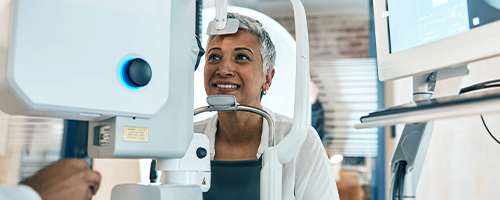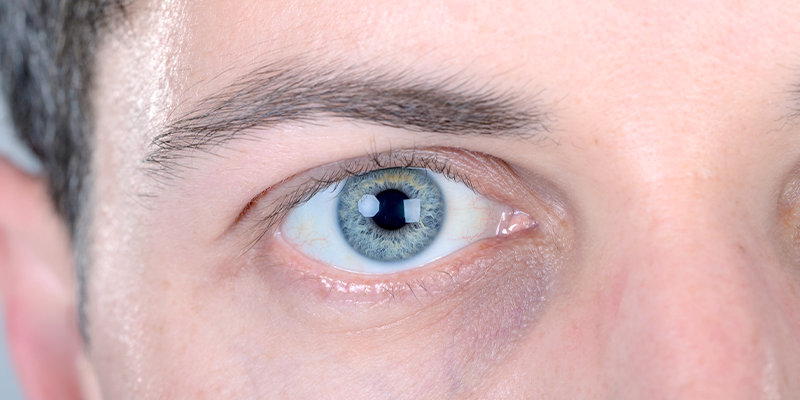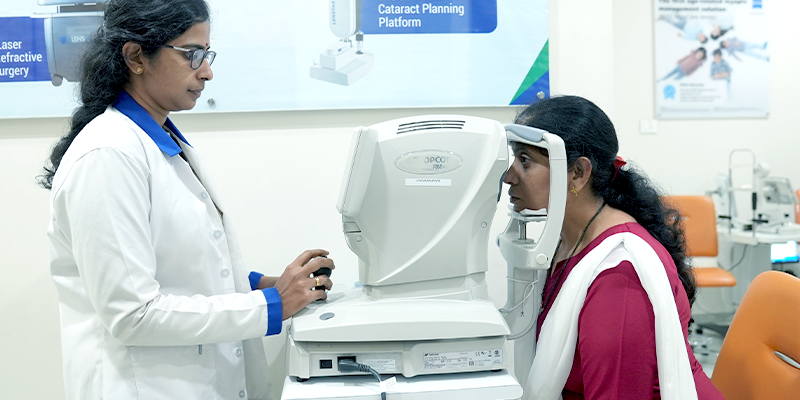Cataracts are a common eye condition where the lens of the eye becomes cloudy, leading to decreased vision. Imagine looking through a frosty or fogged-up window; that's what vision can feel like cataracts. This condition often develops slowly and can affect one or both eyes.

The clinical presentation of cataracts includes a variety of visual disturbances. Key symptoms are:
This fundamental symptom signifies the progressive opacification of the lens.
Reduced contrast sensitivity and increased glare can make night driving particularly challenging.
Increased sensitivity can result in discomfort and difficulty functioning in brightly lit environments.
Tasks that require fine visual acuity may demand enhanced illumination.
The cloudy lens in your eye allow the light to spread out. At night, the halos are more clear.
As the lens in your eye changes, your vision gets worse.
The lens in your eye changes how light passes through it. This affects how you see colours.
This is called monocular diplopia. It happens when the lens in your eye is not smooth.
At first, the cloudiness in your lens may be small. You might not even notice it. But as cataracts grow, the cloudiness gets worse. More of the lens gets cloudy. This blocks more light from passing through. Your vision gets worse over time.
See an eye doctor if you notice any changes in your vision. Get medical help right away if you have sudden vision changes. This includes double vision, flashes of light, eye pain, or sudden headaches.
Most cataracts happen as people get older. The proteins and fibres in the lens of the eye break down over time. This makes the lens cloudy. Other things can also cause cataracts, like:
Some inherited conditions make you more likely to get cataracts.
Diseases like diabetes, past eye surgery, or taking steroid medicines can cause cataracts.
Prolonged exposure to ultraviolet radiation and smoking are significant risk factors.
The lens, situated behind the iris, is responsible for focusing light onto the retina. With ageing, the lens becomes less flexible, thicker, and less transparent. Proteins and fibres in the lens break down and aggregate, causing the characteristic cloudiness. As the cataract enlarges, it obstructs light transmission, leading to blurred vision
Cataracts usually affect both eyes, though often asymmetrically, resulting in differential visual impairment between the eyes.
Cataracts are categorised based on their location and progression:

Affect the centre of the lens, initially causing myopia (nearsightedness) and subsequently progressing to significant yellowing or browning of the lens.

Begin as wedge-shaped opacities on the lens periphery and gradually advance towards the centre.

Develop at the back of the lens, impacting reading vision, and exacerbating glare and halo effects under bright light conditions.

Present at birth or develop during childhood, often associated with genetic syndromes or intrauterine infections.
While definitive preventive measures for cataracts are not established, several strategies may mitigate their development:

Routine eye exams facilitate early detection and management of cataracts and other ocular conditions.

Avoiding tobacco use reduces cataract risk.

Effective control of diabetes and other systemic diseases can decrease cataract formation.

Consuming a diet rich in fruits and vegetables provides antioxidants, which are beneficial for eye health.

Wearing UV-blocking sunglasses can protect against cataract-inducing ultraviolet radiation.

Limiting alcohol intake can lower the risk of cataracts.
Cataracts are a common reason for issues with sight that can be addressed. Regular eye check-ups and changes in the way you live could ease risks and slow things down. For severe cases, cataract surgery is a very good answer. It makes the vision clear again and helps improve life quality.
While Shree Ramkrishna Netralaya is your top choice for eye care in Mumbai, you may also consider our other reputable clinics and hospitals near you.
Address:
201 & 202 Elmer #Plot #563, Central Avenue, Corner of, 11th Rd, Chembur, 400071
Phone: 082917 14838
Timing: Mon-Sat- 10 a.m. To 8 p.m.
Address:
Near Risk Care Hospital, Near Makhamali Talao, LBS Marg, Thane, W, Mumbai, Maharashtra 400601
Phone: 02225441139
Timing: Mon-Sat- 11 a.m. To 8 p.m.